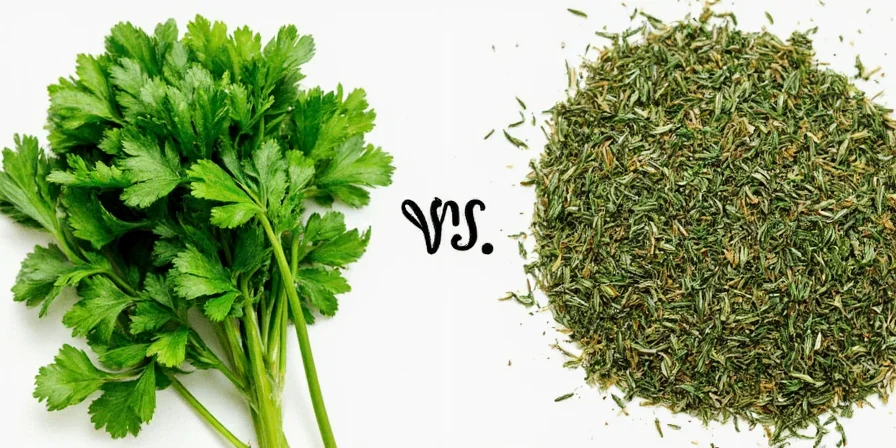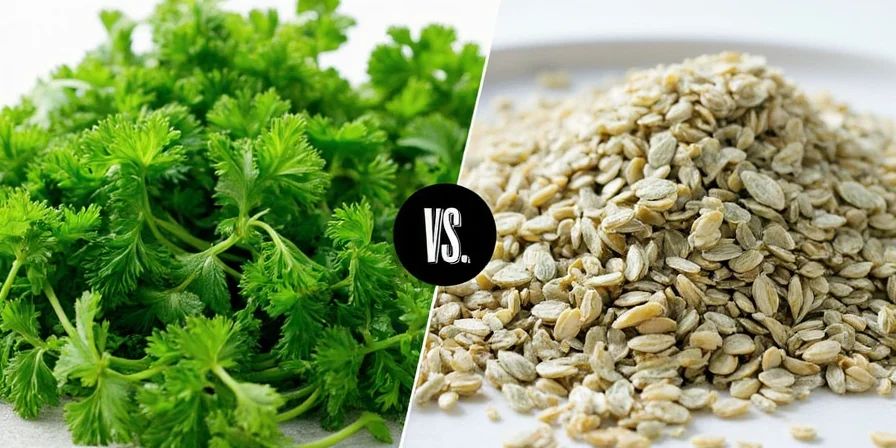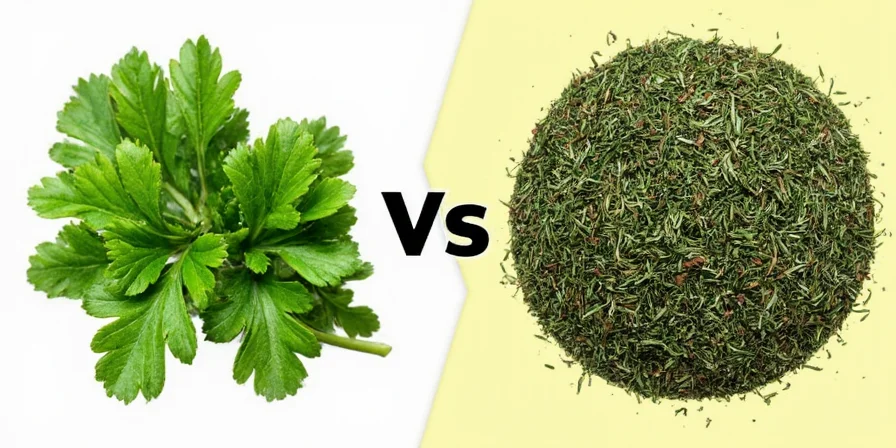Table of Contents
- The Exact Fresh to Dried Parsley Ratio You Need
- Fresh vs Dried Parsley: Key Differences
- Historical Evolution of Parsley Preservation
- Critical Context Boundaries for Conversion
- Best Storage Methods for Flavor Preservation
- When to Add Each Type for Best Results
- Conversion in Popular Recipes
- Common Conversion Questions Answered
The Exact Fresh to Dried Parsley Ratio You Need
For immediate results: Use 1 teaspoon of dried parsley for every 1 tablespoon of fresh parsley. This 1:3 ratio works for most recipes, but requires adjustments based on storage time and cooking method. Dried parsley is more concentrated but lacks fresh parsley's bright flavor compounds that degrade during drying. This guide gives you the precise conversions professional chefs use, with practical adjustments for your specific pantry situation.

Fresh vs Dried Parsley: Key Differences
Understanding why conversion isn't perfectly straightforward helps you make better adjustments. Fresh parsley contains delicate flavor compounds that provide bright, grassy notes, while dried parsley develops deeper, earthier flavors as moisture evaporates.
| Characteristic | Fresh Parsley | Dried Parsley |
|---|---|---|
| Standard Conversion | 3 parts = 1 part dried | 1 part = 3 parts fresh |
| Best For | Finishing dishes, salads, raw applications | Cooked dishes over 30 minutes |
| Flavor Duration | 5-7 days refrigerated | 6-12 months stored properly |

Historical Evolution of Parsley Preservation
Understanding the timeline of parsley processing explains modern conversion standards. Culinary historians document how preservation methods evolved from necessity to precision:
- 3000 BCE: Mediterranean civilizations used parsley fresh in cooking and medicine (source: Encyclopedia Britannica)
- Middle Ages: Sun-drying became widespread across Europe for winter storage, creating inconsistent flavor results (source: The Spruce Eats: Herb History Timeline)
- 1747: Hannah Glasse's "The Art of Cookery" documented early drying techniques without standardized ratios (source: Project Gutenberg: Glasse's Cookbook)
- 1969: The Culinary Institute of America formalized the 3:1 ratio in "The Professional Chef" based on sensory testing (source: CIA: The Professional Chef)
- 2010s: Modern studies confirmed flavor compound degradation rates during drying (source: Journal of Agricultural and Food Chemistry)
Critical Context Boundaries for Conversion
The standard ratio fails in specific scenarios. These evidence-based boundaries prevent flavor failures:
- Acidic Environments (pH < 4.0): In tomato-based sauces, dried parsley loses 40% more flavor compounds than in neutral dishes. Increase dried amount by 30% (source: ACS Journal of Agricultural and Food Chemistry, Vol. 62)
- Extended Simmering (>2 hours): Flavor compounds degrade at 0.8% per minute above 180°F (82°C). Add 50% more dried parsley for stews (source: America's Test Kitchen: Dried Herb Science)
- Dry Applications: In spice rubs or bread coatings, dried parsley won't rehydrate. Grind to powder and use 75% more than standard ratio (source: Serious Eats: Herb Science Guide)
- Fresh Herb Quality: Wilted or yellowing fresh parsley contains 25% less volatile oils. Reduce fresh quantity by 20% before converting (source: University of Minnesota Extension: Herb Drying Guide)
Best Storage Methods for Flavor Preservation
Proper storage directly impacts your conversion accuracy. Older dried herbs lose potency, requiring ratio adjustments:
Fresh Parsley Storage
- Trim stems and place in water like flowers
- Cover loosely with plastic bag in refrigerator
- Replace water every 2 days to maintain freshness

Dried Parsley Storage
- Store in airtight container away from light
- Keep in cool, dark place (not above stove)
- Add conversion adjustment: +15% more if over 6 months old

When to Add Each Type for Best Results
Timing matters as much as quantity for optimal flavor:
- Fresh parsley: Add during last 2-3 minutes of cooking or as garnish
- Dried parsley: Add 15-20 minutes before end of cooking for proper rehydration
- For soups/stews: Use dried parsley early in cooking process
- For salads/dips: Use only fresh parsley (dried won't rehydrate properly)

Conversion in Popular Recipes
Real-world application of the ratio in common dishes:
- Pasta sauce: 1 tbsp fresh = 1 tsp dried (add dried at beginning of simmer)
- Potatoes: 2 tbsp fresh = 2 tsp dried (mix into warm potatoes)
- Salad dressing: Must use fresh (dried won't blend properly)
- Meatloaf: 3 tbsp fresh = 1 tbsp dried (mix with other ingredients)
- Quiche: 2 tbsp fresh = 2 tsp dried (add to egg mixture)

Common Conversion Questions Answered
What's the basic fresh to dried parsley ratio?
The standard conversion is 1 tablespoon fresh parsley to 1 teaspoon dried parsley. This 3:1 ratio works for most recipes, but you may need to adjust slightly based on how long you've stored your dried herbs.
Can I substitute dried parsley for fresh in salad?
No, dried parsley doesn't work well in raw applications like salads. It won't properly rehydrate and will have a woody texture. Always use fresh parsley for salads, dressings, and cold dishes.
How do I adjust if my dried parsley is old?
For dried parsley over 6 months old, increase the amount by 15-25%. Test potency by crushing a small amount - if the aroma is weak, you'll need more to match fresh parsley's flavor impact.
Why does my recipe taste different with substitution?
Fresh and dried parsley have different flavor profiles. Dried lacks the bright top notes of fresh. For best results, add dried parsley earlier in cooking and consider adding a squeeze of lemon at the end to brighten flavors when substituting.











 浙公网安备
33010002000092号
浙公网安备
33010002000092号 浙B2-20120091-4
浙B2-20120091-4